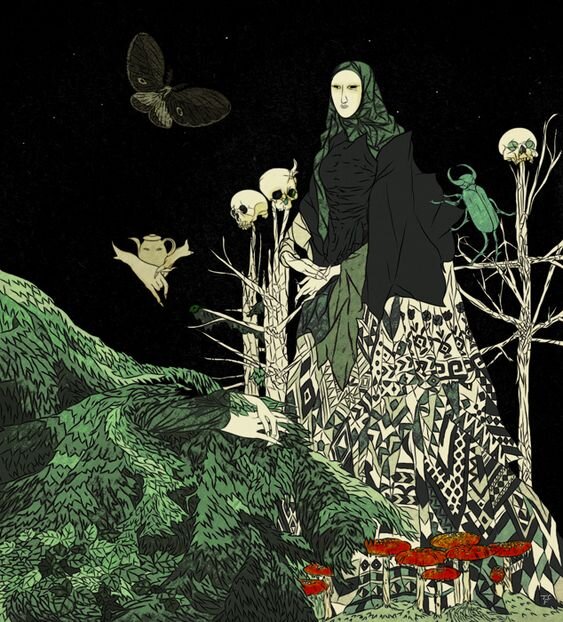All About Slavic Paganism
Recently I’ve been obsessed with The Witcher series on Netflix. While this show is based in a fantasy universe, it is largely inspired by Slavic mythology. In the show we see several fascinating creatures from the Slavic mythos, such as the Striga and the Kikimora.
This show has made me realize how little I know about Slavic Paganism and has really inspired me to seek more knowledge about this topic. So, I've done some research and in my video linked below you'll find some introduction information about Slavic Paganism.
Early Slavic paganism has been a challenge for historians to study. Unlike Greek & Roman paganism there is no existing original source material because the early Slavs left no records of their gods, prayers, or rituals. The only texts we have is through secondary sources, which were mostly written by monks during the period when the Slavic states were Christianized. However, The Slavic peasants were not Christianized to the extent that other areas of Europe were so a lot of the religious customs from Slavic Paganism were preserved as Folk traditions.
There are numerous deities in Slavic Paganism, many of whom have dual aspects. The deity Rod, is a creator God and considered a father god to many other figures in Slavic mythology, such as Perun, a god of thunder and the sky. His opposite is Veles, who is associated with wild animals, the Underworld, and magic.
The best known Slavic deity here in America is probably Czernobog who was the incarnation of darkness. In Slavic lore, Czernobog decided he wanted to control the world and universe, so he turned into a great black serpent. Svarog, The God of Celestial Fire, knew that Czernobog was up to no good, so he took up his hammer and forge and created additional gods to help him stop Czernobog. When Svarog finally called for aid, the other gods joined him to defeat Czernobog before he could take over the universe.
In the Slavic creation stories there began with only darkness, inhabited by Rod, and an egg that contained Svarog. The egg cracked open, and Svarog climbed out; the dust from the eggshell formed a sacred tree which rose to separate the heavens from the sea and the land. Svarog then used gold powder from the underworld to create a world full of life, and then he created the sun and the moon. The debris from the bottom of the egg was gathered and formed to create humans and animals.
While there are many variations of this creation story, they almost always include two deities, one dark and one light, representing the underworld and the heavens.
One very popular figure from Slavic Folklore is of course the Baba Yaga. Baba Yaga is a supernatural being who appears as a deformed or ferocious-looking old woman. In Russian fairy tales, Baba Yaga flies around in a small cauldron, and dwells deep in the forest in a hut usually described as standing on chicken legs.
Like other Pagan religions, Slavic rituals were based on agricultural celebrations and the movement of the Sun and the Moon. One important celebration is Velja Noc, which falls in March and is considered the Slavic New Year’s Eve since the Pagan Slavs followed the Lunar calendar. On this day shamans wear elaborate masks and coats of sheep wool and roam around the villages to welcome the spirits of the ancestors so that they may celebrate the new year with their living relatives.
Today there is a strong resurgence of interest in Slavic Paganism and I’m excited to see that Slavic folklore & deities are still remembered and honored across Eastern Europe and beyond.
I hope you enjoyed this short introduction to Slavic Paganism. Share your favorite Slavic deity in the comments. 👇

